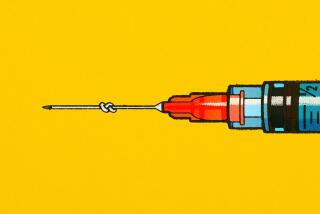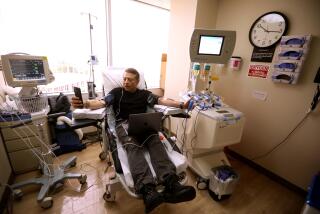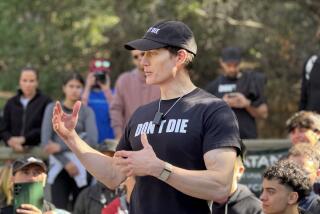Growing body parts and improving prosthetics
Dr. Anthony Atala, director of the Wake Forest Institute for Regenerative Medicine, is used to hearing his work described as science fiction.
Way back in 1999, he and his team grew bladders in a lab and successfully implanted them in patients with spina bifida. Then in 2004, his team grew urethras for five young boys in Mexico City. Eight years later, the laboratory-grown tissue looks as natural as the boysâ own.
At the rate research like Atalaâs is progressing, scientists predict that replacement organs will be a reality within years, not decades. Thatâs part of the future of medicine: new tissues, new body parts and new hope for recovery.
It was in 1981 that scientists first tried to grow skin from a patientâs own cells. Although it was unsuccessful, it did help the healing process.
Today, scientists are growing more than 30 types of tissues and organs at the Wake Forest Institute in Winston-Salem, N.C. The hard work of growing vital organs âis a major challenge,â Atala says. Although his lab has already grown a set of lungs, so far theyâre only experimental. âIt should be only a matter of time before we create solid organsâ such as livers and hearts, he says.
Replacement limbs
Growing a liver is one thing; growing a new arm or a leg is still beyond the realm of possibility. And thatâs where prosthetics come in.
More than 65,000 people in the U.S. have a limb amputated each year, and for most, adjusting to a mechanical body part is a huge challenge. One of the biggest problems is the inability to feel objects.
Thatâs why the Rehabilitation Institute of Chicago has developed a procedure called targeted reinnervation, which allows patients to âfeelâ sensations through a prosthetic arm. The procedure involves connecting the nerves that remain after an arm is amputated to another muscle, ideally in the chest.
After the procedure, patients are able to move more naturally. Sensors in the prosthesis send signals to the working muscle and allow patients to feel the lightest touch, even hot and cold. They can cut vegetables, pick up a glass and even shake someoneâs hand with a more natural motion, says Dr. Todd A. Kuiken, a Northwestern University professor and director of the Rehabilitation Instituteâs Center for Bionic Medicine.
Most people underestimate the sophistication it takes to make a working arm, Kuiken says. Picking up a glass or a flower without crushing it requires just the right amount of pressure and coordination. Even reaching out to shake a friendâs hand can be a problem if you have a prosthesis.
âWe do a lot of social interaction with our limbs,â he says. âIf youâre going to squeeze someoneâs hand with your prosthesis, it makes it more meaningful.â
Researchers have used targeted reinnervation not only on recent amputees but also on patients who have been missing their arms for years, including some veterans who served in Iraq and Afghanistan. Kuiken says the center is now working on motorized legs that will give patients a more natural range of motion.
Artificial muscles
The premise of Steve Austinâs âSix-Million Dollar Manâ may still be alive.
In a field known as biomimetics, scientists are using polymers in an attempt to create muscles that are vastly more powerful than natural muscles â as much as 50 times stronger. Moreover, they hope to create muscles that run on fuel cells that can last much longer than bulky batteries.
Ray Baughman, a professor of chemistry and director of the NanoTech Institute at the University of Texas at Dallas, sees many uses for artificial muscles. One possibility is that theyâll power prosthetic limbs for those who become frail with old age. They may even be made into a glove that can help the elderly hold or carry heavy objects.
Spray-on skin
In Philip K. Dickâs 1960 novel âDr. Futurity,â a time-traveling physician uses a spray-on skin called âart-derm.â Now itâs becoming a reality.
In a building at Wake Forest Baptist Medical Center, researchers are testing a spray-on skin that could greatly reduce the way skin grafts are collected for burn patients.
âI foresee it changing the way we treat burns forever,â said Dr. James H. Holmes, director of the medical centerâs burn center and leader of the trial.
Burns are some of the most difficult injuries to recover from, particularly because the harvesting of skin grafts creates a second area of scarring. But with a postage stamp-sized skin biopsy and a spray-on kit, a doctor can cover nearly 50 square inches of a patientâs body.
The technology is already being used in Europe and Australia under the name ReCell, but it hasnât yet been approved for use in the United States. If it gets the nod from the Food and Drug Administration, it could be in use by 2014.
Researchers at the University of Utah have applied a similar gel on heart patientsâ scars after surgery and on other wounds slow to heal due to poor circulation. The gel is made with platelets as well as stem cells, which have the ability to kick-start an older personâs healing abilities to nearly the level they were when they were younger, says Dr. Amit Patel, director of clinical regenerative medicine at the university.
âThe stem cells are key because they respond to the local environment and determine whether we need more skin cells or more blood vessels,â Patel says. âIf you only pick one cell type, it may not stick or survive as well.â






